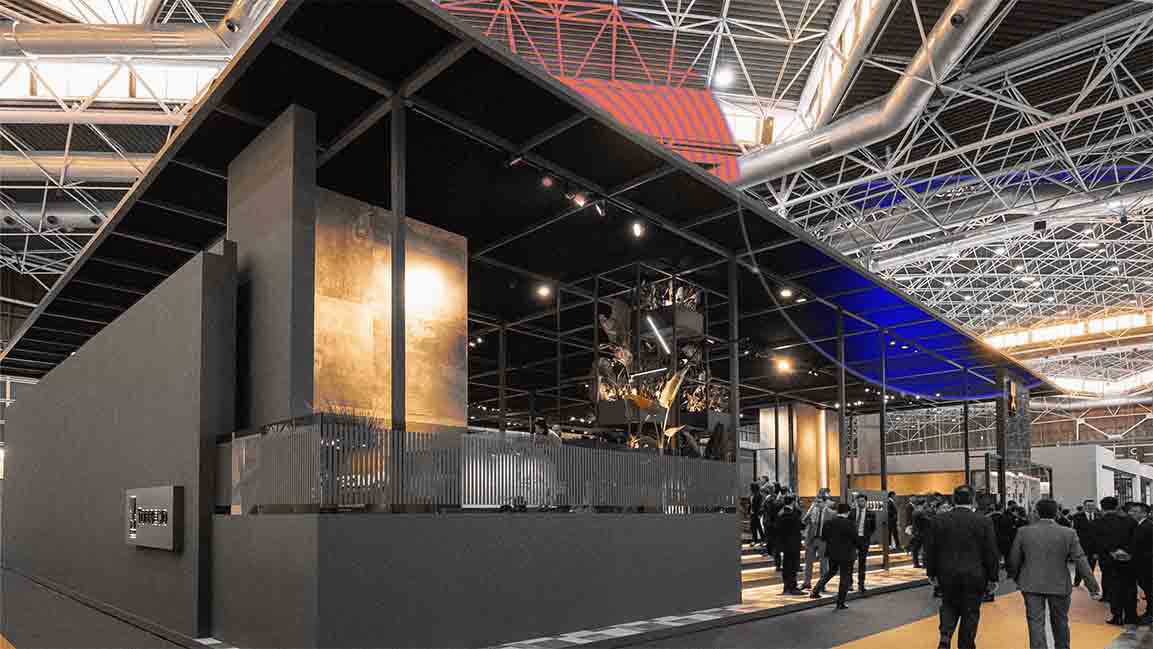- | 11:00 am
Cevisama showcases Spanish tilemakers eyeing the Middle East market
From plain terracotta to elaborately decorated tiles, Spanish tiles are a focal point in contemporary architecture and interior design spaces.

In Spain, they say every tile tells a story. One such story is Antoni Gaudí’s Panot, a hexagonal tile featuring marine creatures. The tile was initially intended for his Casa Batlló but was eventually used on the floor of the Casa Milà on the nearby Passeig de Gràcia. In 1997, the city relaid the boulevard’s pavement with a Panot reproduction as a tribute to the architectural genius.
And there are many stories like that. Did you know Placido Domingo, Sophia Loren, Claudia Schiffer, and King Charles are fans of Spanish tiles?
Apart from attractions like flamenco, fine art museums, and gothic cathedrals, Spain’s tiles are a unique local art form. Each has a different geometric or floral design, a trademark of modernisme, the distinctly Catalan version of art nouveau.
TILES ARE THE FOCAL POINT
For centuries tiles were a popular flooring material – cheaper than marble but no less beautiful. From the affordable and versatile portland cement tiles, handmade by artisans working a hydraulic press, to the ceramic ones used on walls and floors in homes and public spaces, tiles are still a focal point.
Now, under the Tile of Spain, the international brand representing over 100 ceramic tile producers belonging to the Spanish Ceramic Tile Manufacturers Association (ASCER), Spanish ceramic tiles are increasingly featured in contemporary architecture and interior design spaces. The Tile of Spain also awards companies, a well-established event in the world of architecture, to raise greater awareness of the use of Spanish tiles in architectural projects – in Spain and abroad. Known for their versatility, the tiles have a decorative function and could be used for flooring and cladding furniture.
INNOVATION AND DIGITALIZATION
The Spanish tile industry is known for innovation. One of the most game-changing developments in ceramic tile is digital printing. In 2010, Kerajet showcased the first digital inkjet printer for ceramics at Cevisama, an international trade fair for ceramic tiles.
In 2022, ASCER embarked on a campaign to drive training in Building Information Modelling (BIM) among Tile of Spain companies to maintain its competitive differentiation of ceramic tile products in international markets. The aim was to centralize all the project information in a digital information model, incorporating geometric, time, cost, environmental, and maintenance data.
More recently, a manufacturing technique from Torecid, a Spanish manufacturer of glaze and other compounds, is disrupting the textural possibilities of tile – from hyperrealism of materials to entirely new looks. And they are stunning.
The designs naturally lend themselves to variations in a range of complex shapes that evoke elegance and minimalist novelty. The first commercialized versions were debuted by the Spanish tile producers Peronda Group and Inalco.
Spanish companies are also investing significantly in new technologies, focusing on new functional properties of ceramic tiles, such as air cleaning, visual and smart signaling, heating, and energy-saving features, and improving efficiency in the process and production cost management.
DEMAND IN THE MIDDLE EAST
Cevisama, back after a two-year hiatus, is a leading platform showcasing the most innovative designs in ceramic tiles. The five-day fair, which is on until March 3 in Valencia, is attended by over 100,000 industry professionals worldwide.
Driven by increasing demand for sustainable living across the Middle East and environmentally friendly products, the Spanish ceramic tiles market in the region is expected to witness strong growth.
The regional interior design market is emerging as a growth driver for the construction sector, which is projected to be over $133 billion by 2027, and this is expected to make the sector more attractive to international suppliers, which will, in turn, give interior designers and homeowners a wider choice of products for their projects. Additionally, Introduction of 3D tiles is also driving the ceramic tiles market growth in the region.
Spanish tile manufacturers like Apasiva, Vives, Ceracasa, Decocer, and Halon Ceramics, exhibiting their latest innovative products at Cevisama 2023, have plans for region-centric ceramics.
Tile of Spain is looking to tap into this emerging market with region-centric ceramic tiles that conform to the region’s unique environment.
Ceramics are labeled as the tile of sustainability; they are easy to install and versatile in application in interior design spaces across segments, contributing to their popularity in the region, especially in the UAE and Saudi Arabia.
As the production techniques continuously evolve, and Spanish manufacturers craft new collections, trade fairs, like Cevisama, and organizations like Tile of Spain are helping to showcase the latest ceramic trends, manufacturing techniques, and innovations in Spanish tiles.
Besides aesthetic versatility, Spanish tile is known for durability and antimicrobial properties, which are increasingly desirable in the post-Covid era. No wonder then that ceramic tile collections from Spanish manufacturers are lapped up by designers and homeowners to infuse a space with nearly every color palette and possibility.
































